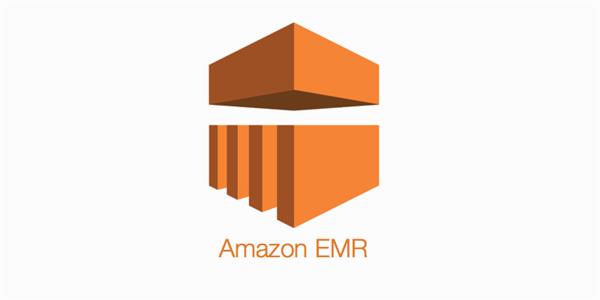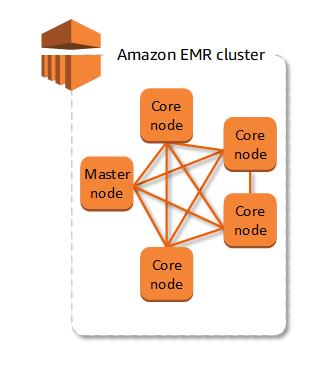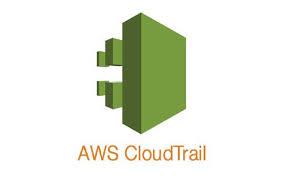What is AWS EMR?
What is AWS EMR?
Amazon EMR is an overseen group stage that improves running huge information systems, for example, Apache Hadoop and Apache Spark, on AWS to process and break down tremendous measures of information. By utilizing these structures and related open-source ventures, for example, Apache Hive and Apache Pig, you can process information for investigation purposes and business insight outstanding tasks at hand. Moreover, you can utilize Amazon EMR to change and move a lot of information into and out of different AWS information stores and databases, for example, Amazon Simple Storage Service (Amazon S3) and Amazon DynamoDB.

With EMR you can run Petabyte-scale examination at not exactly 50% of the expense of conventional on-premises arrangements and over 3x quicker than standard Apache Spark. For short-running employments, you can turn up and turn down groups and pay every second for the cases utilized. For long-running outstanding burdens, you can make exceptionally accessible groups that consequently scale to fulfill the need.
Advantages
There are numerous advantages to utilizing Amazon EMR. This segment gives an outline of these advantages and connections to extra data to assist you with investigating further.
Cost Savings
Amazon EMR evaluation relies upon the case type and number of EC2 instances that you send and the area where you dispatch your group. On-request valuing offers low rates, however, you can decrease the expense significantly further by buying Reserved Instances or Spot Instances. Spot Instances can offer noteworthy investment funds—as low as a tenth of on-request evaluating at times.
AWS Integration
Amazon EMR incorporates different AWS administrations to give abilities and usefulness identified with systems administration, stockpiling, security, etc, for your bunch.
Organization
Your EMR bunch comprises of EC2 instances, which play out the work that you submit to your group. At the point when you dispatch your bunch, Amazon EMR arranges the examples with the applications that you pick, for example, Apache Hadoop or Spark. Pick the occasion size and type that best suits the preparing requirements for your bunch: cluster handling, low-inactivity inquiries, gushing information, or huge information stockpiling.
Adaptability and Flexibility
Amazon EMR gives adaptability to scale your group up or down as your registering needs change. You can resize your group to include occasions for top outstanding tasks at hand and expel cases to control costs when top remaining burdens die down. Amazon EMR additionally gives the alternative to run different occurrence gatherings so you can use On-Demand Instances in a single gathering for ensured preparing power along with Spot Instances in another gathering to have your occupations finished quicker and for lower costs.
Dependability
Amazon EMR screens hubs in your group and naturally ends and replaces an occasion if there should be an occurrence of disappointment. Amazon EMR gives setup choices that control how your group is ended—consequently or physically.
Security
Amazon EMR uses different AWS administrations, for example, IAM and Amazon VPC, and highlights, for example, Amazon EC2 key sets, to assist you with making sure about your bunches and information.
IAM
Amazon EMR coordinates with IAM to oversee consents. You characterize authorizations utilizing IAM strategies, which you join to IAM clients or IAM gatherings. The consents that you characterize in the approach decide the activities that those clients or individuals from the gathering can perform and the assets that they can get to.
Security Groups
Amazon EMR utilizes security gatherings to control inbound and outbound traffic to your Amazon EC2 examples. At the point when you dispatch your bunch, Amazon EMR utilizes a security bunch for your lord example and a security gathering to be shared by your center/task occurrences
Encryption
Amazon EMR bolsters discretionary AWS S3 server-side and customer side encryption with EMRFS to help secure the information that you store in Amazon S3. With server-side encryption, AWS S3 scrambles your information after you transfer it.
Amazon VPC
Amazon EMR bolsters propelling bunches in a virtual private cloud (VPC) in Amazon VPC.
AWS CloudTrail
Amazon EMR coordinates with CloudTrail to log data about solicitations made by or for the benefit of your AWS account.
Amazon EC2 Key Pairs
You can screen and interface with your group by framing a safe association between your remote PC and the ace hub. You utilize the Secure Shell (SSH) arrange convention for this association or use Kerberos for validation.
Monitoring
You can utilize the Amazon EMR the executive's interfaces and log documents to investigate bunch issues, for example, disappointments or blunders. Amazon EMR gives the capacity to chronicle log records in AWS S3 so you can store logs and investigate issues considerably after your bunch.
Management Interfaces
There are a few different ways you can cooperate with Amazon EMR:
Support:
A graphical UI that you can use to dispatch and oversee groups. With it, you round out web structures to indicate the subtleties of bunches to dispatch, see the subtleties of existing groups, investigate, and end bunches.
AWS Command Line Interface (AWS CLI) :
A customer application you run on your nearby machine to associate with Amazon EMR and make and oversee bunches. The AWS CLI contains an element rich arrangement of orders explicit to Amazon EMR.
Programming Development Kit (SDK) :
SDKs give works that call Amazon EMR to make and oversee bunches. With them, you can compose applications that computerize the way toward making and overseeing groups. Utilizing the SDK is the best choice to expand or tweak the usefulness of Amazon EMR.
Web Service API:
A low-level interface that you can use to call the web administration legitimately, utilizing JSON. Utilizing the API is the best alternative to make a custom SDK that calls Amazon EMR.
Overview:
Getting Clusters and Nodes
The focal segment of Amazon EMR is the group. A bunch is an assortment of Amazon EC2 occurrences. Each occurrence in the group is known as a node. Every node includes a job inside the bunch, alluded to as the node type. Amazon EMR additionally introduces diverse programming segments on every node type, giving every node a job in a distributed application like Apache Hadoop.
The node types in Amazon EMR are as per the following:
Master node: A node that deals with the bunch by running programming segments to arrange the conveyance of information and tasks among different nodes for handling. The master node tracks the status of tasks and screens the wellbeing of the bunch. Each group has a master node, and it's conceivable to make a solitary node bunch with just the master node.
Core node: A node with programming segments that run tasks and store information in the Hadoop Distributed File System (HDFS) on your bunch. Multi-node clusters have at any rate one core node.
Task node: A node with programming parts that lone run tasks and doesn't store information in HDFS. Task nodes are discretionary.
The accompanying chart speaks to a bunch with one master node and four-core nodes.

Submitting Work to a Cluster
At the point when you run a bunch on Amazon EMR, you have a few choices concerning how you determine the work that should be finished.
Give the whole meaning of the work to be done in capacities that you indicate as steps when you make a group. This is commonly accomplished for clusters that procedure a set measure of information and afterward end when handling is finished.
Make a long-running bunch and utilize the Amazon EMR comfort, the Amazon EMR API, or the AWS CLI to submit steps, which may contain at least one occupation.
Make a group, associate with the master node and different nodes as required utilizing SSH, and utilize the interfaces that the introduced applications give to perform tasks and submit inquiries, either scripted or intelligently.
Handling Data
At the point when you dispatch your group, you pick the systems and applications to introduce for your information handling needs. To process information in your Amazon EMR bunch, you can submit occupations or questions straightforwardly to introduced applications, or you can run steps in the group.
Submitting Jobs Directly to Applications
You can submit occupations and collaborate straightforwardly with the product that is introduced in your Amazon EMR group. To do this, you commonly associate with the master node over a protected association and access the interfaces and apparatuses that are accessible for the product that runs legitimately on your group.
Preparing Data
At the point when you dispatch your group, you pick the structures and applications to introduce for your information handling needs. To process information in your Amazon EMR bunch, you can submit employments or inquiries straightforwardly to introduced applications, or you can run steps in the group.
Submitting Jobs Directly to Applications
You can submit employments and associate straightforwardly with the product that is introduced in your Amazon EMR group. To do this, you normally associate with the master node over a protected association and access the interfaces and apparatuses that are accessible for the product that runs straightforwardly on your group.
Running Steps to Process Data
You can submit at least one arranged strides to an Amazon EMR group. Each progression is a unit of work that contains guidelines to control information for preparing by programming introduced on the bunch.
Coming up next is a model procedure utilizing four stages:
Present an information dataset for handling.
Procedure the yield of the initial step by utilizing a Pig program.
Procedure for a second information dataset by utilizing a Hive program.
Compose a yield dataset.


For the most part, when you process information in Amazon EMR, the information is information put away as documents in your picked basic record framework, for example, AWS S3 or HDFS. This information goes starting with one stage then onto the next in the handling grouping. The last advance composes the yield information to a predefined area, for example, an Amazon S3 bucket.
Understanding the Cluster Lifecycle
An effective Amazon EMR group follows this procedure:
Amazon EMR first arrangements Amazon EC2 instances in the group for each occasion as per your details. For all instances, Amazon EMR utilizes the default AMI for Amazon EMR or a custom Amazon Linux AMI that you indicate. During this stage, the bunch state is STARTING.
Amazon EMR runs bootstrap activities that you determine on each occurrence. You can utilize bootstrap activities to introduce custom applications and perform customizations that you require. During this stage, the bunch state is BOOTSTRAPPING.
Amazon EMR introduces the local applications that you determine when you make the group, for example, Hive, Hadoop, Spark, etc.
After bootstrap, activities are effectively finished and local applications are introduced, the group state is RUNNING. Now, you can associate with group instances, and the bunch successively runs any means that you determined when you made the bunch. You can present extra advances, which pursue any past advances in total.
After advances run effectively, the bunch goes into a WAITING state. On the off chance that a bunch is arranged to auto-end after the last advance is finished, it goes into a SHUTTING_DOWN state.
All things considered, instances are ended, the group goes into the COMPLETED state.
A disappointment during the group lifecycle causes Amazon EMR to end the bunch and the entirety of its instances except if you empower end insurance. On the off chance that a group ends in light of a disappointment, any information put away on the bunch is erased, and the bunch state is set to fail. On the off chance that you empowered end insurance, you can recover information from your group, and afterward expel end assurance and end the bunch.
So in the end, AWS EMR is a cloud-based BIG data platform that allows you to perform data analytics and all other heavy tasks with the ease of the cloud. If you have any doubts regarding the topic, write to me in the comment section. To read more informative articles on various topics stay connected with Tutorialslink. Keep reading and stay healthy








